Past Auction Killer Two Unique Patek 96HU ‘worldtime’
Fine WatchesCollector's InsightPatek Philippe is known for many things. One of them is for creating the famous world time watch or ‘heurs universelle’.
While some pocket watches from Patek had world time dials in the 1940s already, it wasn’t until the 1950s when Patek would create its masterpiece, a double crown world time reference 2523. What I didn’t realise – is that a world time existed in a wrist watch already in the 1930’s.
And these two early Patek world time watches from the 1930’s are my next PAK watches.
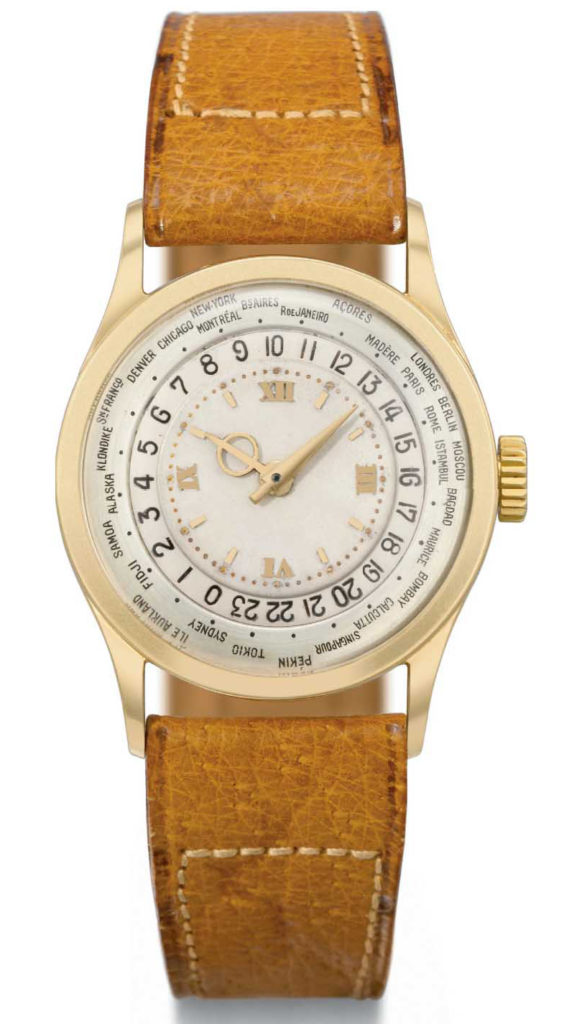
(Picture credit: Christies).
In the 1930’s Patek would come out with their most important shape, that would come to define the brand, the Calatrava.
The first Calatrava called the reference 96, was popular with collectors and it was indeed one of the earliest round wristwatches that sold extremely well for Patek. Remember we are talking still about the dawn of wristwatches and back in the 1930s, the wristwatch was still relatively small in diameter (the 96 is 31mm).
Most ref 96 were time only models, except for a few complicated ‘triple calendar models’ that I wrote about here. These triple calendar or full calendars were extremely rare and sold for astronomical amounts when they came for auction.
What I did not realise was that there was another complicated model to be found within the 96 reference. Called the world time or ‘heure universelles‘. The exact model name is the 96HU (HU standing for heure universelles).
Now here are where things get interesting.
I associate the earliest world time watches to be the Ref 1415 by Patek made in the end of the 1930s mostly 1940s (see watch below which will be a future PAK watch as it as anything but a normal 1415).
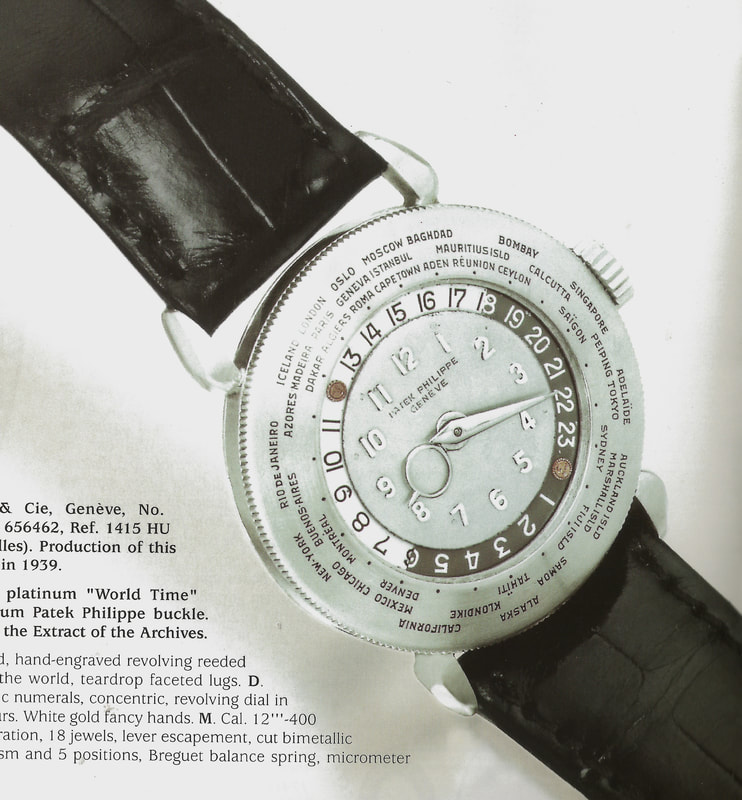
(Picture Credit: Antiquorum).
Yes, there is an earlier world time attributed to Patek, the 515HU made in 1937. I think it was just a prototype made for a special New York client. In fact, only one is known to have appeared to the market (and indeed was for sale in 1994 at Antiquorum). See the watch below.
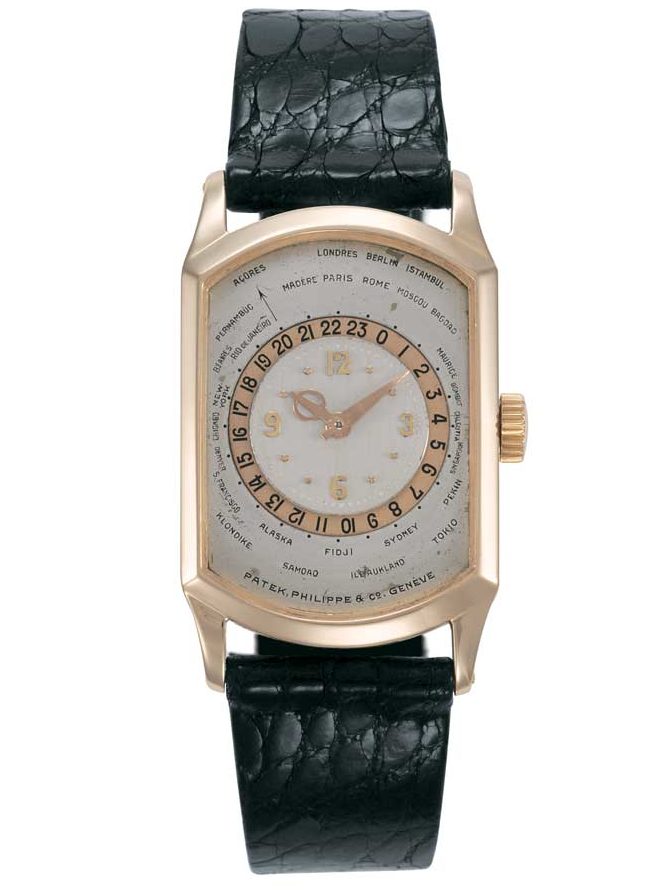
(Picture credit: Antiquorum).
The pair of PAK watches I have chosen are similar in that many believe they were nothing more than prototypes. But still they were made in a pair and would look like the ‘more familiar’ world times we know later on with 1415 and the double crown versions.
Looking at the first version below.
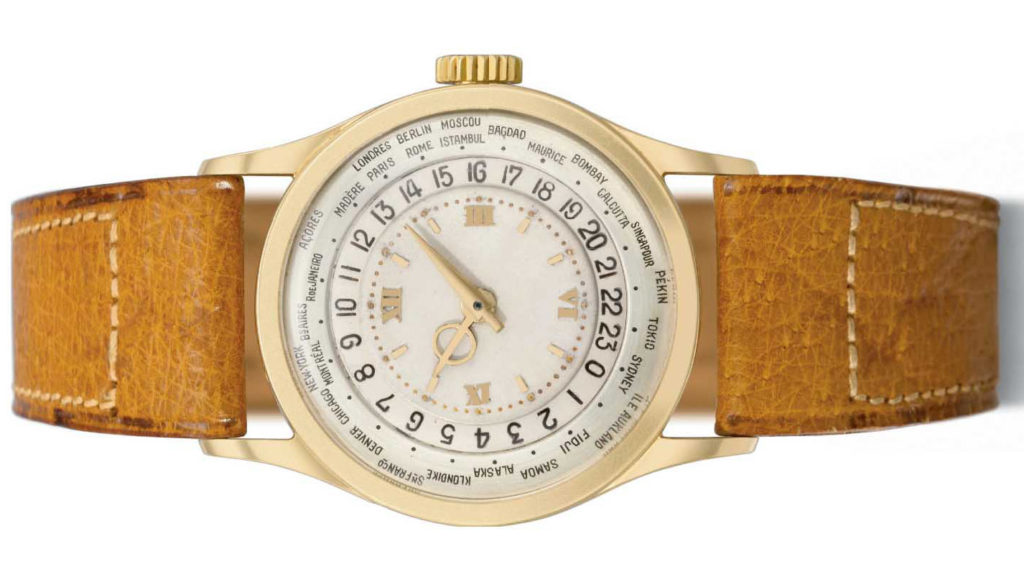
This watch, the Ref. 96 HU “Calatrava”cased in yellow gold around 1934, finished in 1937 and sold in 1938, has the names of 28 cities on a ring around the dial. It is believed to be a unique example according to Christies Lot Notes.
What is most interesting is the absence of the name Patek Philippe on the dial, something that many believe was done on purpose and indicating that these watches were prototypes and never meant for commercial sale.
Disappointingly – the owner of the watch cannot adjust the cities via a revolving ring. The ring would first come later with the double crown world time (by pulling out one of the crowns or with the 1415 by rotating the bezel).
The watch sold in 2011 for CHF 411’000 or near the mid-point of the estimate range.
The second 96 HU is a somewhat more attractive version (in my opinion at least) with a multi-coloured dial (see below).
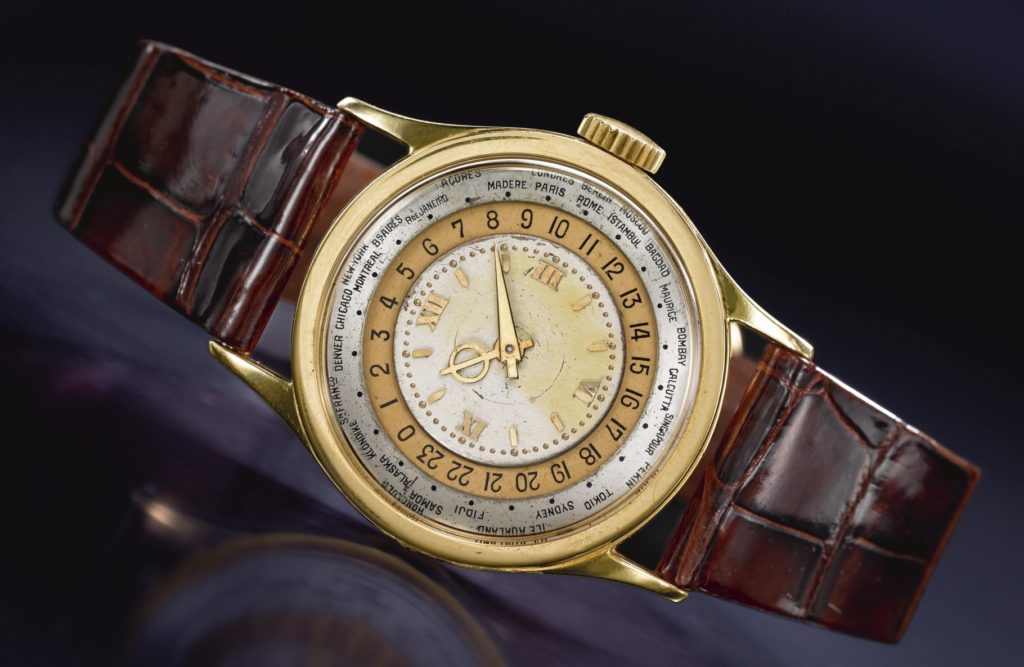
(Picture Credit: Sothebys).
Unlike the first watch, this one was cased and sold within the same year, in 1937.
This particular is distinguished by its beautiful salmon 24-hour ring as well as by the pearl markers on the watch dial. Again, like the first 96 shown above – it is without a Patek signature on the dial. Much like the watch above it was sold by at auction also in 2011, for CHF 482’000.
Unfortunately, like the first 96 above – the watch is has no adjustable dial, making it impossible for the owner to adjust the time zones without a watch maker taking out the dial and turning it (very impractical though).
Closing remarks
What make these two watches PAK status?
- Well for a start they are among the earliest world times by Patek.
- Perhaps even more importantly they are Calatravas, a shape that was also introduced in the 1930s and would be legendary for Patek.
- They are important concerning Patek’s history and the development of world time watches.
- Both watches are considered prototypes to what would eventually be the standard Patek world time double crown.
I would say almost all vintage Patek Philippe world time is a PAK watch by definition. Why so? They are rare and important and very much part of Patek’s storied history. These early Calatrava world time can be considered prototypes in the world time watches to come and take a defining moment in Patek world time history.
In my view, without a doubt, both are PAK watches.
